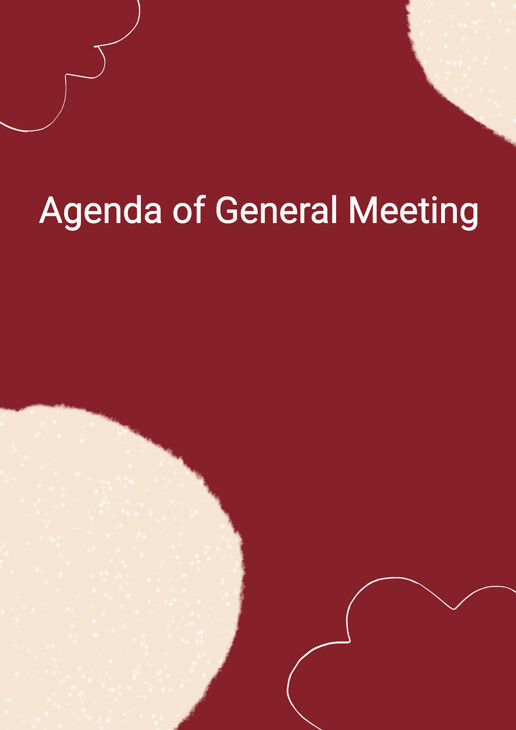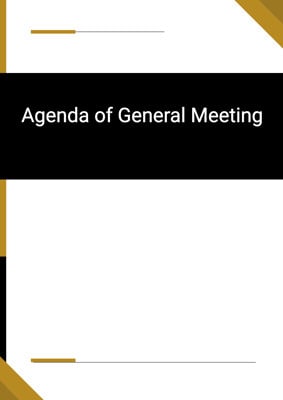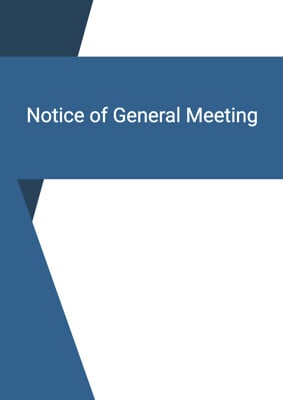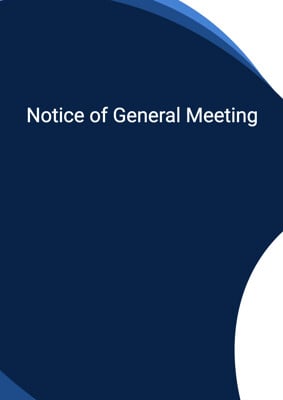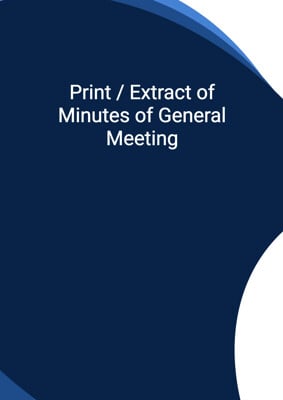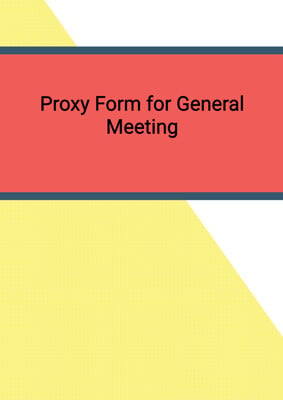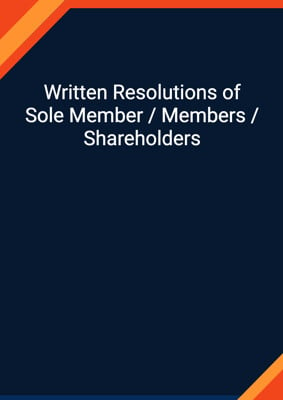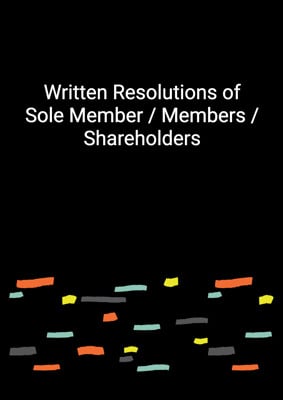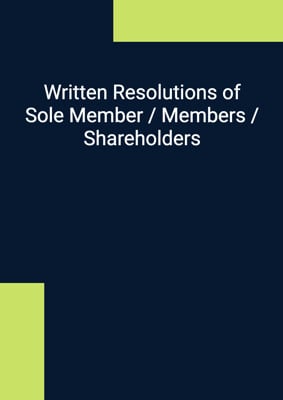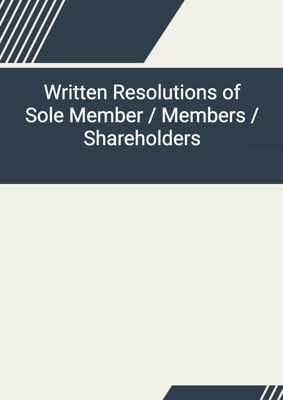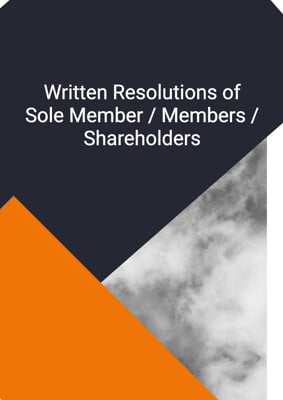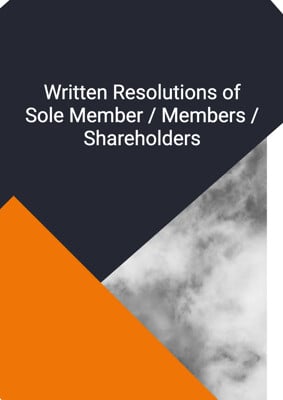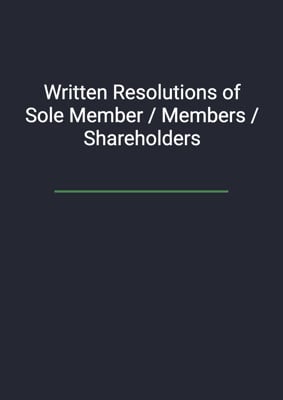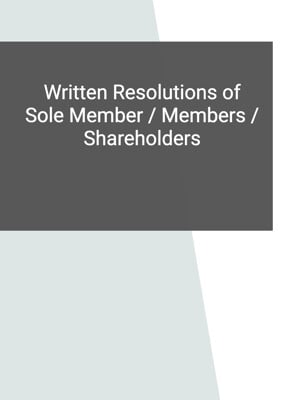How to Tailor the Document for Your Need?
01
Create Document
Click "Create Document" button and the document will be prepared with your account details automatically filled in.
02
Fill Information
Please fill in any additional information by following the step-by-step guide on the left hand side of the preview document and click the "Next" button.
03
Get Document
When you are done, click the "Get Document" button and you can download the document in Word or PDF format.
04
Review Document
Please review the document carefully and make any final modifications to ensure that the details are correct before publication / distribution.
Document Preview
Document Description
The document titled 'Agenda of General Meeting' is an important document that outlines the agenda and proceedings of a general meeting of a company. The purpose of this document is to provide a structured framework for conducting the meeting and ensuring that all necessary topics are discussed and decisions are made.
The entire document is divided into several sections, each serving a specific purpose. The first section is the 'Call to Order', which is the opening of the meeting by the chairperson. This section sets the tone for the meeting and signals the official start of the proceedings.
The second section is 'Establish Quorum', which involves checking the attendance of the required number of members to constitute a quorum. This is important to ensure that decisions made during the meeting are valid and binding.
The third section is 'Chairperson's Remark', where the chairperson addresses the attendees and provides any necessary remarks or updates. This section helps to set the context for the meeting and provide any relevant information.
The fourth section is 'Approval of Agenda', where the agenda for the meeting is reviewed, corrected if necessary, and approved. This section ensures that all topics to be discussed are included in the agenda and that any changes are noted.
The fifth section is 'Discussed the Motions Proposed', which is the main part of the meeting where various motions are discussed and decisions are made. This section includes a list of specific motions that will be discussed, such as amendment of the constitution, change of name, removal of directors, and vote of no confidence on the board of directors.
If there are any ordinary resolutions, they are reviewed in section six. This section provides an opportunity to consider and pass ordinary resolutions related to the agenda items.
If there are any special resolutions, they are reviewed in section seven. This section provides an opportunity to consider and pass special resolutions related to the agenda items.
The final section is 'Adjournment', which marks the end of the meeting. This section includes any necessary instructions or announcements regarding the next steps or future meetings.
Overall, the 'Agenda of General Meeting' document is a comprehensive and detailed guide for conducting a successful general meeting, ensuring that all important topics are discussed and decisions are made in a structured and organized manner.
How to use this document?
1. Call to Order: The chairperson should officially open the meeting and announce the start time.
2. Establish Quorum: Check the attendance to ensure that the required number of members are present for the meeting to be valid.
3. Chairperson's Remark: The chairperson should provide any necessary remarks or updates to set the context for the meeting.
4. Approval of Agenda: Review the agenda, make any necessary corrections or additions, and obtain approval from the attendees.
5. Discussed the Motions Proposed: Discuss each motion proposed in the agenda, such as amendment of the constitution, change of name, removal of directors, and vote of no confidence on the board of directors.
6. Review Ordinary Resolutions: If applicable, review and pass any ordinary resolutions related to the agenda items.
7. Review Special Resolutions: If applicable, review and pass any special resolutions related to the agenda items.
8. Adjournment: Close the meeting and provide any instructions or announcements regarding the next steps or future meetings.
Not the right document?
Don’t worry, we have thousands of documents for you to choose from:
